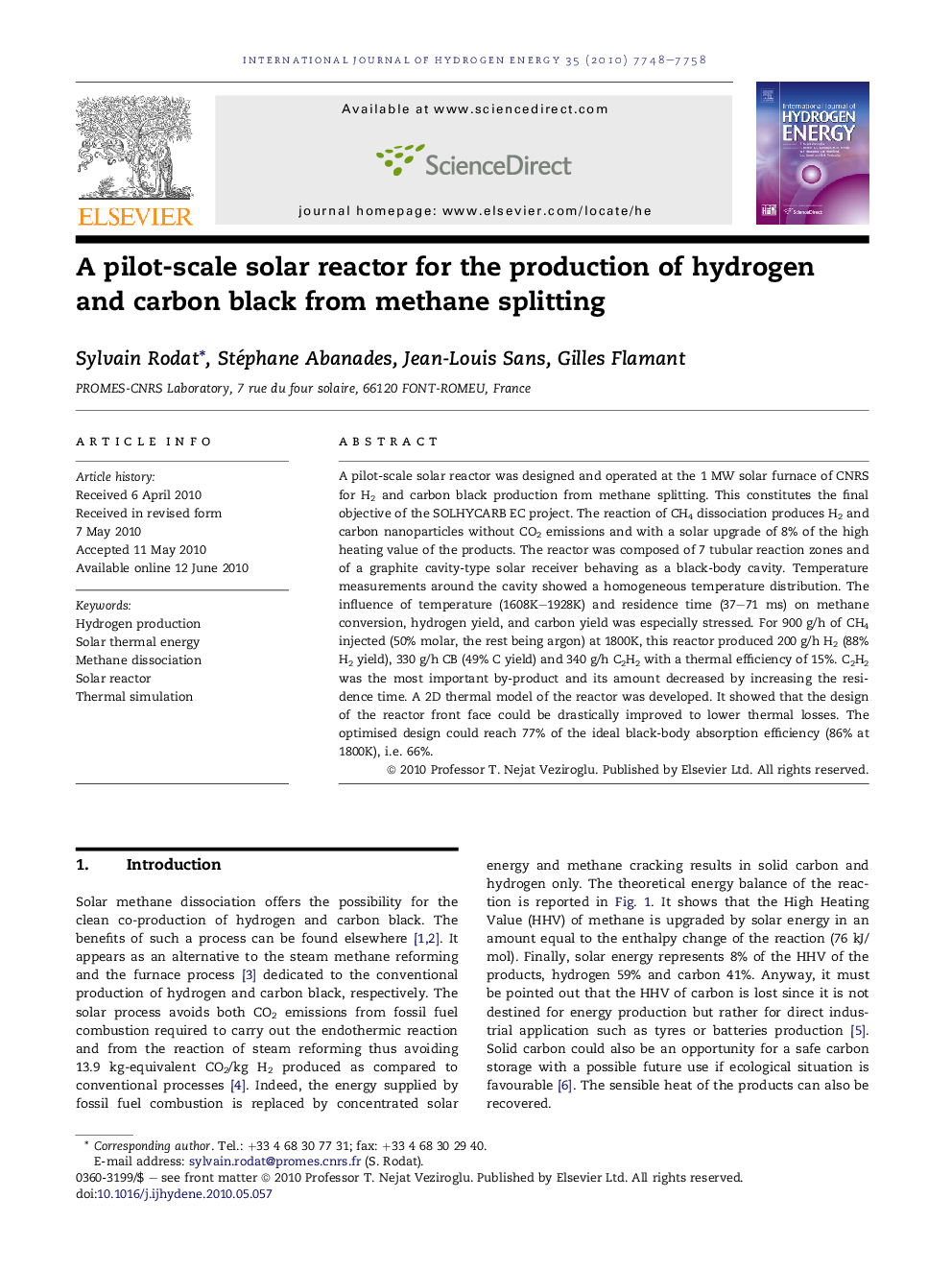| Article ID | Journal | Published Year | Pages | File Type |
|---|---|---|---|---|
| 1277950 | International Journal of Hydrogen Energy | 2010 | 11 Pages |
A pilot-scale solar reactor was designed and operated at the 1 MW solar furnace of CNRS for H2 and carbon black production from methane splitting. This constitutes the final objective of the SOLHYCARB EC project. The reaction of CH4 dissociation produces H2 and carbon nanoparticles without CO2 emissions and with a solar upgrade of 8% of the high heating value of the products. The reactor was composed of 7 tubular reaction zones and of a graphite cavity-type solar receiver behaving as a black-body cavity. Temperature measurements around the cavity showed a homogeneous temperature distribution. The influence of temperature (1608K–1928K) and residence time (37–71 ms) on methane conversion, hydrogen yield, and carbon yield was especially stressed. For 900 g/h of CH4 injected (50% molar, the rest being argon) at 1800K, this reactor produced 200 g/h H2 (88% H2 yield), 330 g/h CB (49% C yield) and 340 g/h C2H2 with a thermal efficiency of 15%. C2H2 was the most important by-product and its amount decreased by increasing the residence time. A 2D thermal model of the reactor was developed. It showed that the design of the reactor front face could be drastically improved to lower thermal losses. The optimised design could reach 77% of the ideal black-body absorption efficiency (86% at 1800K), i.e. 66%.
